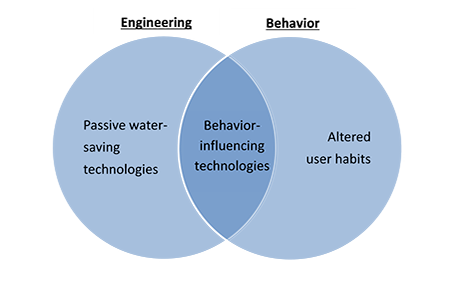
The U.S. Environmental Protection Agency identifies two general categories for practices designed to increase water efficiency: engineering and behavioral. Engineering practices involve technologies designed to passively reduce water irrespective of the user’s behavior (e.g., low-flow toilets). Behavioral practices refer to changing users’ habits irrespective of the technology being used. This binary focus overlooks the conceptual area where technology and behavior influence each other—an area that has seen much less attention, and is ripe for development.
Argonne is leading an effort to study the overlap. Argonne has hosted that brought together experts in water efficiency, behavioral sciences, design, engineering and other fields, along with commercial developers. This workshop included presentations from thought-leaders in these fields and discussion sessions focused on key topic areas including new technologies under development, key research paths, barriers to advancement, and opportunities for deployment. We will engage a professional meeting facilitator to assist in planning and facilitating the workshop.
Argonne is preparing a report based on the workshop which will capture key insights from presenters and participants, organized around the topic areas of the workshop.